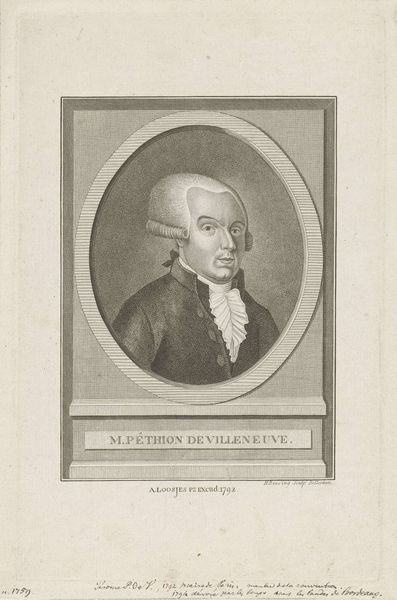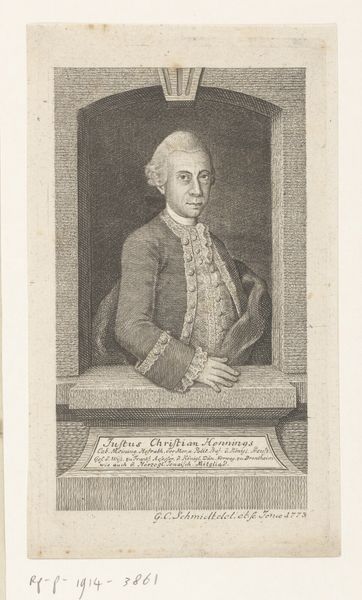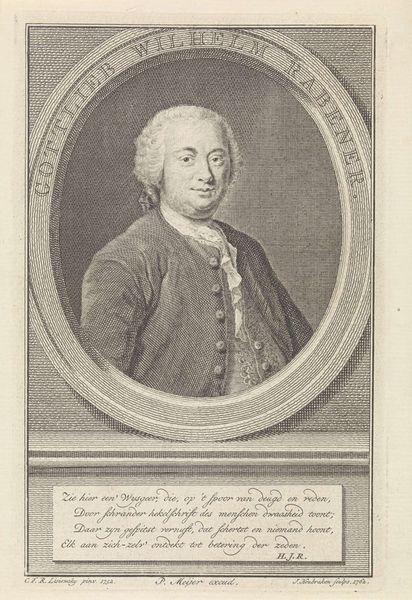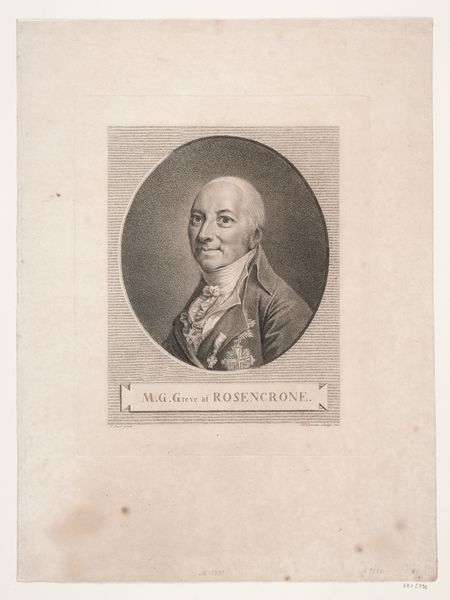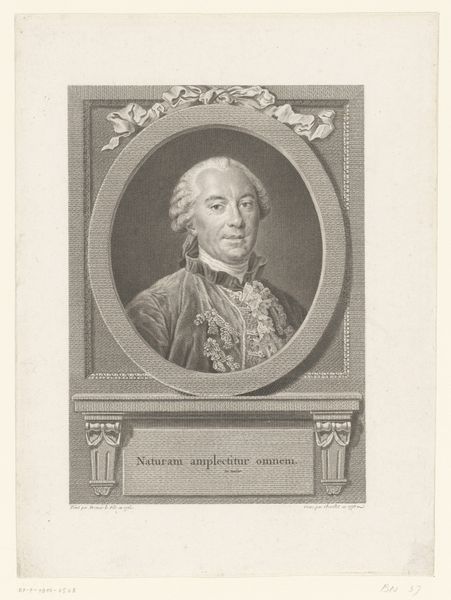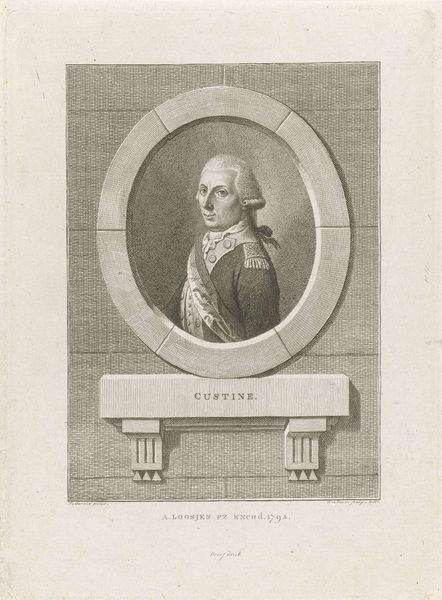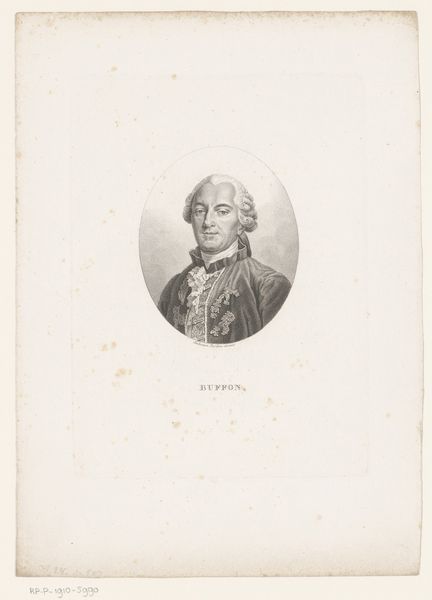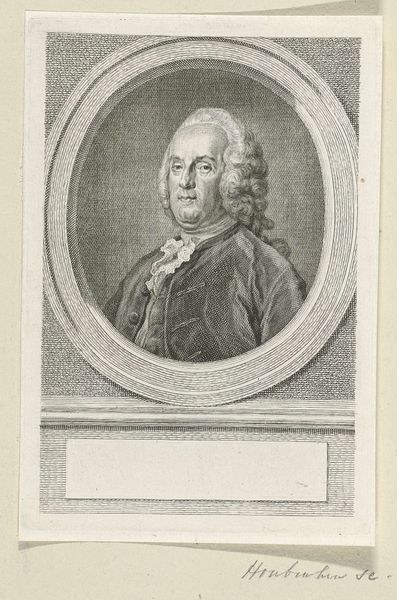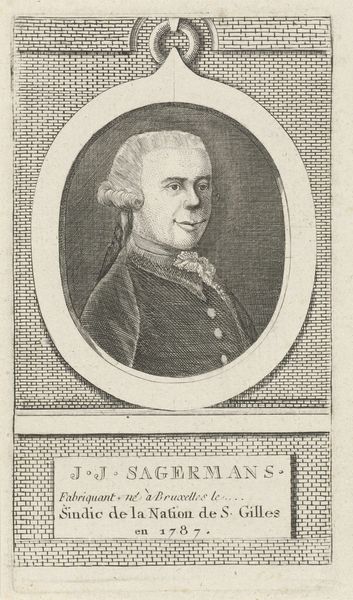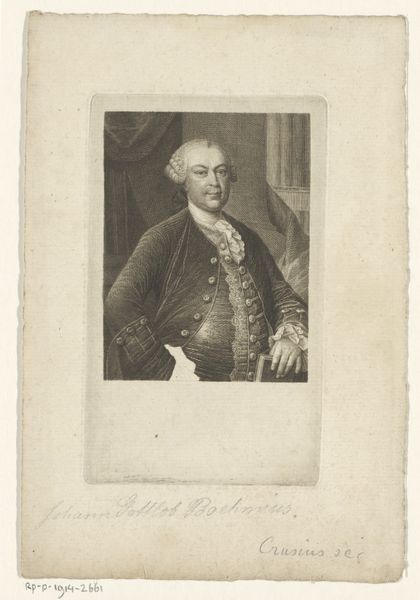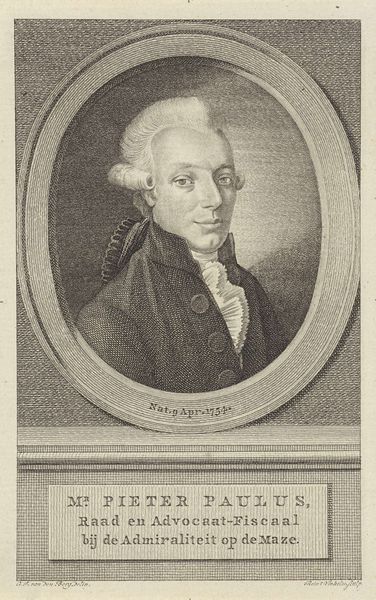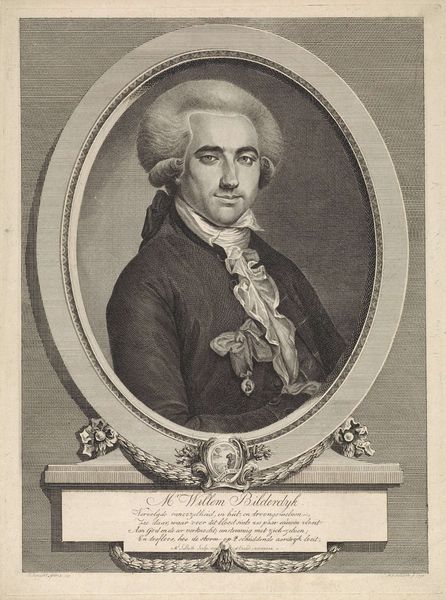
print, engraving
#
portrait
#
neoclassicism
# print
#
old engraving style
#
portrait reference
#
portrait drawing
#
engraving
Dimensions: height 211 mm, width 152 mm
Copyright: Rijks Museum: Open Domain
Curator: This is a portrait of Gerardus Oorthuys, a captain at sea, created between 1822 and 1826 by Willem van Senus. It’s an engraving, printed in Amsterdam. Editor: It’s rather stark, isn’t it? The subject’s expression feels guarded, and the tonal range of the engraving creates a strong sense of formality. Curator: Well, let’s consider the social context. During this period, portraits served specific functions, projecting power, status, and establishing familial lineage within Dutch society. Oorthuys, a naval captain, would have had very specific reasons for commissioning this portrait, using the circulation of prints like these as acts of image politics. Editor: It’s fascinating how the print medium contributes to that message. The clean lines, the almost mechanical precision—it speaks to a certain ethos of the era and the values attached to manufacturing as it reflects broader industrialization and even military uniformity. What does an engraving say about who could afford this imagery and why? Curator: Exactly. Engravings democratized image ownership, if only slightly. It became a powerful method to disseminate an image on a reproducible medium, which speaks directly to the socio-economic currents, which brings this artwork to a broader viewership within the society of its day and even allowing such portraits to outlive the subject. Editor: But the portrait, despite its formality, seems constrained by the small circle, limited access, a world in monochrome... did its reproducibility serve the public beyond a close sphere of influence? Or was it vanity press? Curator: Its utility stretches far beyond mere self-aggrandizement. Think of this print in the hands of sailors looking up to a brave captain. Editor: It provides us a focused study of status. Looking at the textures alone – from the fine lines defining his features to the subtle gradations in the background – and imagining the laborious process of creating this engraving by hand, you start to appreciate the sheer skill of the engraver. It reminds us that even within reproducible media, craftsmanship persists. Curator: Indeed. Through prints such as this one, art had become inextricably linked to larger socio-economic frameworks shaping everything, even our individual identities and how we publicly broadcast our stories. Editor: I agree. We’re left pondering the impact of the tools and industrial processes that created not only the art itself, but the subject’s influence on society as well.
Comments
No comments
Be the first to comment and join the conversation on the ultimate creative platform.

